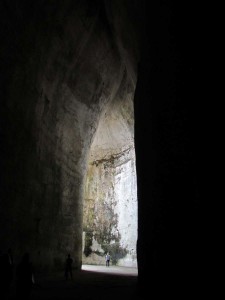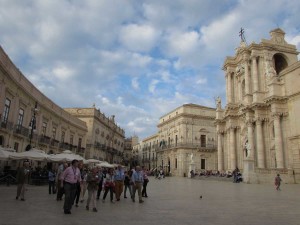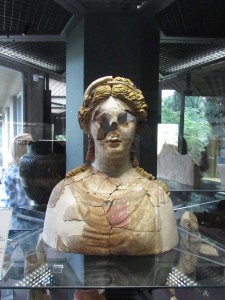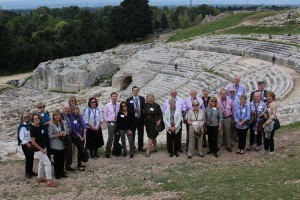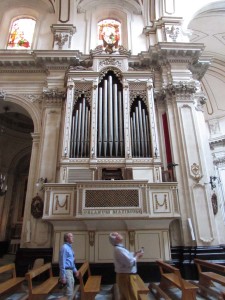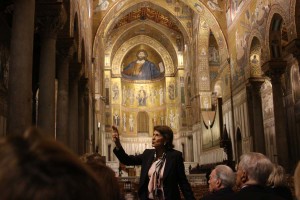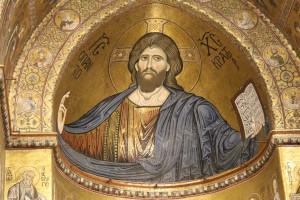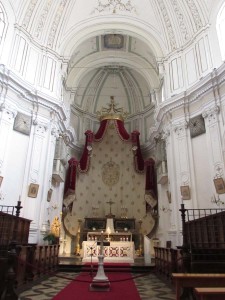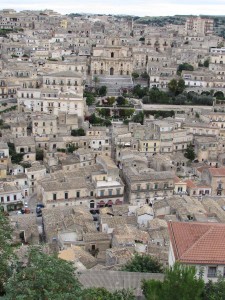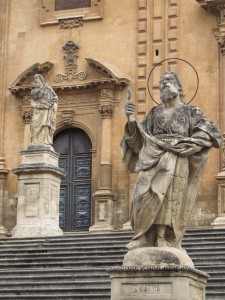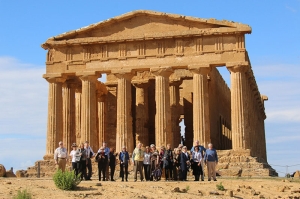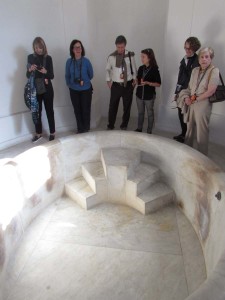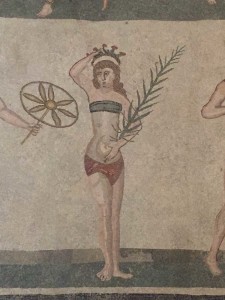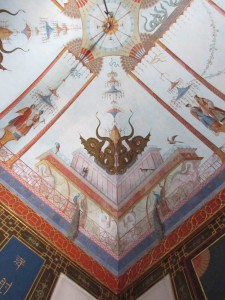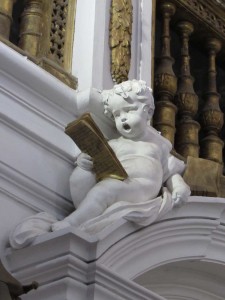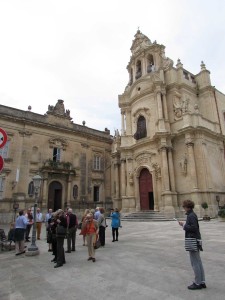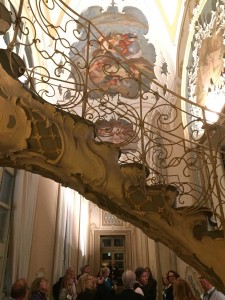The Breathtaking Sites of Sicily
EVENTS > STUDY TRIPS ABROAD
STUDY TRIP ABROAD 2015 IN REVIEW
The toe of the boot-shaped Italian peninsula, Sicily’s location at the crossroads of the ancient world engendered it as a much-desired outpost for rulers in search of a centrally located port. Sicily was governed by almost every major Western culture from the ancient Phoenicians, Egyptians, Greeks, and Romans through to the Ottomans, Spaniards, Normans, Bourbons, and Napoleon Bonaparte. Each of these cultures left their mark on the island, all visible today in Sicily’s artistic landscape, language, and gastronomic traditions.
Under the able leadership of Susie Orso and Nicola Howard of Specialtours, the Decorative Arts Trust’s 2015 Study Trip Abroad to Sicily began in Ortigia, a small island east of Siracusa that is the historic center of the larger city. The magnificent baroque duomo and adjacent piazza sit atop the highest promontory in Ortigia even though the best view of the Porto Grande was surely from the third-floor restaurant at the Grand Hotel Ortigia, where the group stayed. From this base, we traveled to see the ancient Greek theatre and marketplaces, all constructed in limestone extracted from a nearby quarry, whose colossal, serpentine opening was named Dionysus’ Ear for the early ruler of Siracusa.
A day did not go by when we were left hungry for a minute, and most featured at least one tour and meal at a private house. The visit to the magnificent gardens and house of Principessa Borghese offered a glimpse into life in Sicily in the 1950s and 1960s, when she and her husband moved there from Rome and learned how to navigate and thrive in a remote area of post-World War II Sicily. In nearby Catania, dinner at Palazzo Biscari gave us the treat of seeing marquetry-laden furniture, lovely early porcelains, a splendid staircase, and an astonishing long hall featuring hand-painted woodwork with an amazing menagerie of birds (see article). Connections to American art and architecture abounded during these tours, from the familiar visual language of the baroque to the upholstered baldachinos, or canopy beds, that distinguished these exquisite interiors. Decorative wall paintings do not fare well in Sicily’s humid climate but those at Palazzo Beneventano Bosco certainly resemble types that occurred throughout early America.
We ventured inland to the towns of Ragusa, Modica, and Noto, where we were treated to the crescendo of baroque architecture, which flourished in southeast Sicily in the 18th century following a devastating earthquake in 1693. Tucked away into the rugged mountains, each cathedral was grander than the next.
En route to Agrigento, we stopped at Villa Romana del Casale to see the extraordinary mosaic floors of this 3rd or 4th-century AD Roman villa, beautifully preserved under a thick layer of mud deposited during a flood nearly 1,000 years ago. The mosaics extended like wall-to-wall carpeting through every room and hall, some abstract and others narrating vivid stories of everyday life, from trade to the hunt, as well as fables and (what Roman villa would be complete without) baths—depicting female gymnasts wearing bandeau-style bikinis.
Agrigento, along the southern coast of Sicily, is a pilgrimage that any devotee of ancient Greek architecture must make. The arrival at the intimate Villa Athena gave us a panoramic view of the Valley of the Temples. No participant will ever forget dining al fresco on the terrace while gazing at the illuminated temples, particularly the stunning Doric Temple of Concordia, which survives in better condition than many in Greece. As we made our way northwest toward Palermo, lunch at Fabrizia Lanza’s farm and vineyard gave the group an unforgettable taste of Sicily’s richly layered food traditions.
Laura Lanza made our arrival in Palermo particularly momentous with a private evening visit to the Norman King Roger II’s Cappella Palatina. The dazzling 12th-century mosaics seen there are perhaps the most conspicuous demonstration of the cultural crossroads that is Sicily: the Byzantine tradition of mosaic decoration with gold and colored glass tesserae to produce flat, abstract renderings executed by North African artisans, who added fabulous Middle Eastern decorative ornament, to tell a sequence of Roman Catholic narratives. Fresh from a recent cleaning, the intimacy of the Capella Palatina was juxtaposed to the incredible grandeur of the related mosaics in the duomo at Monreale, commissioned by Roger II’s grandson William II, where Signora Lanza had arranged for another private visit. We filed in and obediently took our seats inside the church, darkened by dusk outside. The illumination of first the apse, then the nave, and finally the side aisles left us all in heart-stopping wonderment of the effect of the growing light on the glittering gold and colored mosaics.
Palermo and its environs offered a round-up of all that we had seen so far. Of note were the visits to the painted fantasy of the Palazzina Cinese; two stucco-decorated oratorios; and three private palazzi where, like in America, the owners have made remarkable strides and sacrifices to preserve and protect their houses and, as a result, Sicily’s artistic and architectural treasures. In the early 18th century the Sicilian stuccodore Giacoma Serpotta produced three-dimensional plaster sculptures that cover the walls, ceilings, and altars of these chapels, which were built for mercantile guilds. The intimate spaces were transformed by the plasterwork. Albeit on a much reduced scale, plasterwork was integral to the interiors of 18th-century American houses too, and in Philadelphia stuccodores—taking their name from the Italian masters like Serpotta—ornamented ceilings and walls using molds carved by our famous cadre of London-trained carvers.
The dynamic mixture of Trust members who comprise the international study trips add something indescribable to the experience. So, while the itinerary and the recitation of places visited are appealing and tell a good story, the true experience is far more difficult to convey!
Complete a digital puzzle from this trip on our Puzzles webpage!
SAVE THE DATE
- Special Symposium
“Classical Splendor”
The Philadelphia Museum of Art
November 4, 2016 - New York Antiques Weekend
January 20-21, 2017 - Spring Symposium
Savannah
April 21-24, 2017 - Spring Study Trip Abroad
Scotland
May 14-22, 2017 - Fall Symposium
Hartford & Western Connecticut
September 2017 - Fall Study Trip Abroad
Venice and the Veneto
October 9-16 and 22-29, 2017

